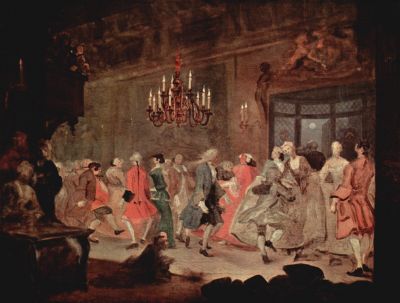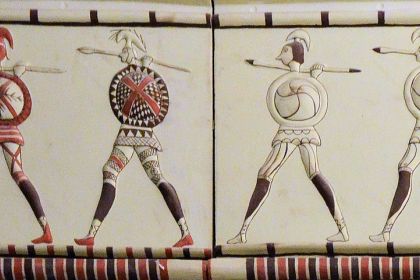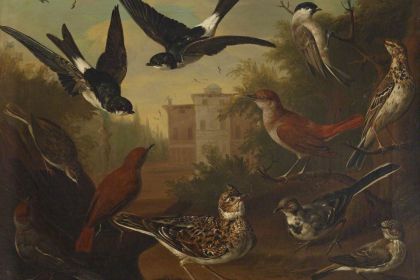ORCHESTRA
Handel's Sarabande: obscure keyboard suite that found its iconic orchestration in Barry Lyndon movie

The Country Dance by William Hogarth inspired Kubrick's interior scenes
The sarabande is a fiery carnival dance that originated in the 16th century in Central America and then spread to Spain where it was banned by the Catholic Church. Despite the decade-long ban, the adaptation of the sarabande as an aristocratic court event was not halted for long. Initially, it was a quick dance performed to the accompaniment of castanets and drums, but it was eventually transformed into a slow pair dance for a more convenient demonstration of the magnificent ball or ceremonial dresses at court.
The influence of the sarabande as it spread throughout Europe during the Baroque era is evident in the music of the time as it is found in slow middle movements of various suites, with the theme being developed mostly in the minor mode as seen in Handel's Keyboard Suite in D minor (HWV 437) published in 1733.
Known as Handel's Sarabande, the fourth movement of this Keyboard Suite is now an immensely popular piece thanks to its use as a leitmotif in Barry Lyndon, the 1975 period drama directed and produced by Stanley Kubrick. Trying to emulate the environment of the 18th century more realistically, Kubrick managed to achieve complete scenic authenticity by shooting in completely natural light or in candlelight and using the fastest lenses designed and made specifically for the NASA Apollo lunar program.
The director's approach to music was no less scrupulous than his and John Alcott's elaborate visual solutions. According to Kubrick, the choice of the musical theme was only made possible after he listened to all available recordings of 17th- and 18th-century music. At the same time, he discovered that Baroque music did not fully support the plot thematically since it was devoid of drama in the modern sense of the word. This problem was solved by Leonard Rosenman who created rather emotional orchestrations together with Ralph Ferraro.
Listen to Handel's Sarabande arranged by Leonard Rosenman for Stanley Kubrick's Barry Lyndon (Original Soundtrack):
As the film's leitmotif, Handel's Sarabande connects events and ideas, obsessively following the protagonist from his days as a peasant youth to those of noble maturity. It establishes the appropriate background dueling scenes, subtextually referencing the inevitability of fate, and closes the film itself as well as effectively capping the main musical structure.
Curiously, the cost of the legendary Carl Zeiss Planar 50mm f / 0.7 lens was just about a million dollars at the time of its creation in 1966, though the ones used during filming were slightly cheaper due to composition. Only ten lenses were produced, of which one is kept by Carl Zeiss, six are owned by NASA, and three by Stanley Kubrick.



